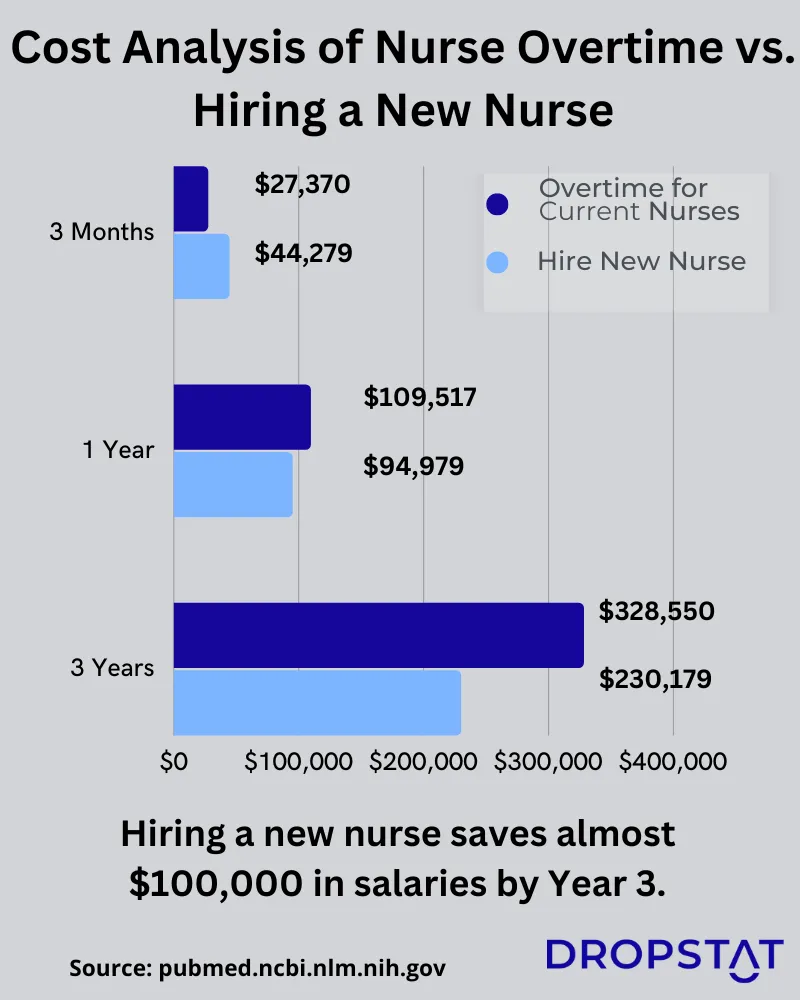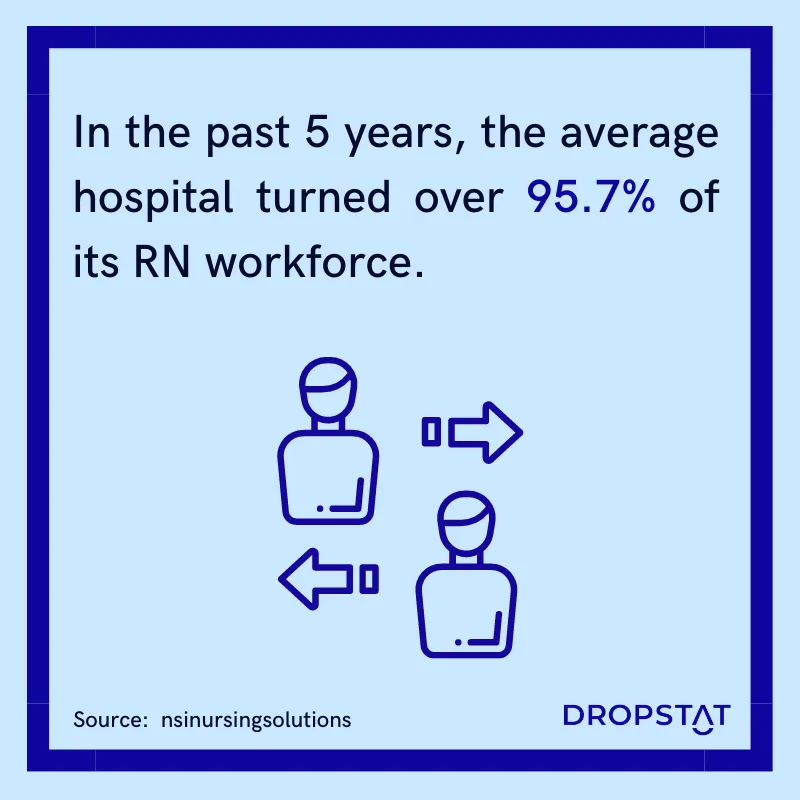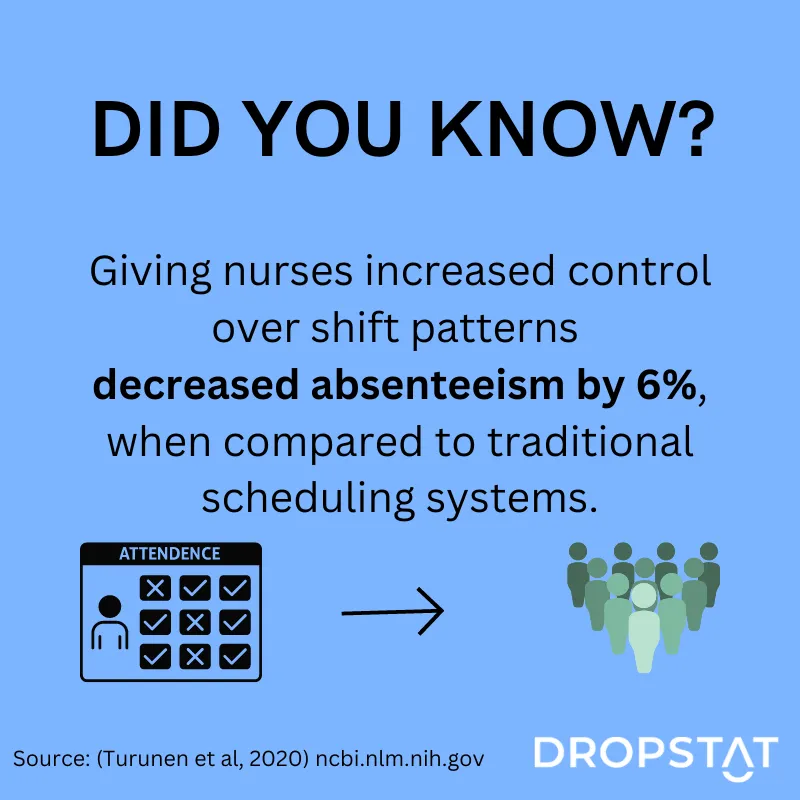What is nurse recruitment?
Nurse recruitment means filling nursing positions in healthcare facilities by finding and hiring nurses for job employment. The opposite of nurse recruitment is a lack of nurses, filling shift gaps with nurses on temporary hire or overworking already-exhausted nurses.
Which nursing recruitment challenges do healthcare facilities face?
Here are some of the main challenges that healthcare facilities face when recruiting nurses:
- Ineffective advertising methods when recruiting nurses, including not taking advantage of social media channels
- Lack of specialist nurses due to changes in health care needs. Demand for certain specialties outstrips supply.
- Facility managers lack advanced knowledge of shift gaps. They don’t have the tools to recruit nurses with the right skill set and qualifications that match their staffing needs.
- Inefficient, outdated nurse recruiting strategies.
- Nurses with the right skill set and qualifications don’t have advance notice of available shift gaps.
- Qualified nurses lack knowledge of career advancement opportunities.
- A negative work ethic in facilities drives nurses to retire early and increases nurse turnover rates. Because of this, facilities have a constant need to recruit nurses.
- Insufficient and disorganized benefit systems repel prospective nurse hires.
- Nurses fear being expected to work harder due to staff shortages and internal organizational chaos.
- Nurses avoid working in facilities that are infamous for lack of staff care.

10 Effective Nursing Recruitment Strategies
If you want to successfully attract and hire nurses to your facility, these 10 strategies will be a game-changer in recruiting nurses for your facility.
1. Advertise effectively.
Advertise in conventional outlets such as nurse student handbooks of nursing colleges. Your organization’s name should appear in medical journals in print and online. Nurse candidates should see your health service on social media resources that nurses use most, which are Facebook, Twitter, Instagram, and LinkedIn, where they support each other within the community of nurses.
For a continuous flow of applicants, advertise in and sponsor medical conferences.
2. Attract the specialist nurses the facility needs.
Identify specialist staffing gaps and present specialist nurse candidates with attractive compensation packages and benefits. Transparently describe your specialist nurse needs and encourage nurse signup for the most challenging jobs, such as the high-pressure health environment of ICU, neonate ICU, and emergency departments. Include “A day in the life of” videos of specialist nurses in your promo material.
3. Become aware of your staffing needs for effective nurse recruiting.
Identify which nursing shift gaps need filling. Use workforce analytics to identify the skills and qualifications missing in each shift gap to provide optimal patient care. Identify when nurse resources are missing. With this information, you can effectively recruit qualified nurses to fill the gaps. When hiring nurses, make sure they possess the characteristics and stamina it takes to be successful nurses.
4. Keep up to date with new nurse recruiting strategies.
New nurse recruiting methods help you contact, filter, and hire nursing recruits. Save time and money with e-recruitment trends like remote interviewing. Scan blogs and newsletters from quality job search sites to keep abreast of the latest recruiting trends. Your active social media presence should include a career tab that links to your career opportunities page.
5. Communicate your staffing needs.
Make it easy for potential nurses to apply for jobs or shifts they are qualified for. Use a staffing app that is a ‘noticeboard’ for nurses, telling them which jobs and shifts are available and when. Qualified nurses in the healthcare facility and nursing candidates will respond if they have advance notice of available gap shifts that they are qualified to fill.

6. Offer career advancement opportunities; encourage learning.
Some nurses want to do the same thing year after year, but most nurses seek to advance their careers. Many candidates who start on the bottom rung of nursing want to climb the ladder to become senior nurses.
Attract ambitious nurses with programs for nurse mentoring and development opportunities, and ensure career advancement through an internal tuition scheme. At the same time, offer current nurses learning opportunities and rewards for completing courses.
7. Promote the advantages of working at your facility
Create a positive work ethic among your staff and promote on all venues for nurse candidates that your facility is a great place to work in. Clearly highlight the benefits, including that the facility promotes staff care and safety, opportunities for growth, and the work-and-rest policy. For effective nursing recruiting, let veteran nurses share the positivity in their nursing community on your marketing outlets, emphasizing the most positive aspects of the job.
8. Offer recruited nurses an attractive benefits package
Since nursing is a candidate-driven market, expect prospective nurses to try to negotiate better salaries and benefits.
Benefits related to the nursing job include fair financial compensation, further education in nurses’ specialties, and opportunities to be present and involved in medical meetings. This is especially necessary for outlying facilities where nurses are more involved in decision-making.
Other job benefits include signing and retention bonuses, travel expenses, paying for further education and qualification, and employee gifts such as catalog shopping, monthly massage, or swimming membership.

9. Build a varied shift schedule for an even work-life balance
Use scheduling software to seamlessly schedule shifts so that your nurses are happy with their shifts. Demonstrate how a nurse’s contribution to the facility will not be at the expense of the quality of a nurse’s personal life. Allow nurses access to create and fill a schedule that works best for them. A facility with an organized staff infrastructure can reassure staff that staff shortages will be minimized.
10. Broadcast your value of self-care for your staff
Recruiters who know what it’s like in the trenches better understand the needs of nursing candidates. Ensure your recruiters emphasize that the facility management cares about their employee’s health and well-being. In the aftermath of COVID-19, many nurses became more aware of the importance of self-care. The pandemic is mostly over, but nurses now care for their needs with greater awareness. Nurse recruitment must reflect this awareness and communicate the facility’s support for its nursing staff care.
How can Dropstat help you to recruit qualified nurses effectively?
Dropstat uses advanced AI technology to help with cost-efficient nurse recruitment by identifying long-term staffing deficits and shifts that are constantly not meeting the required nurse-to-patient ratios.
Dropstat’s advanced analytics also identifies the skill set and nurse qualifications that are missing to aid the recruitment process. This will ensure that when a facility hires, it hires nurses with the right skills and experience. Facilities will avoid overspending on overqualified nurses or hiring underqualified nurses that can’t contribute enough to the facility’s needs.
Schedule a demo to take full advantage of Dropstat for nursing recruitment and successfully recruit your next nurse.







